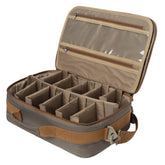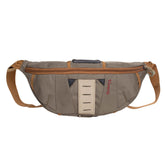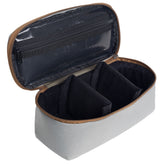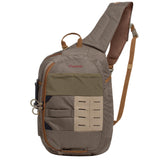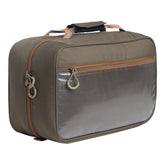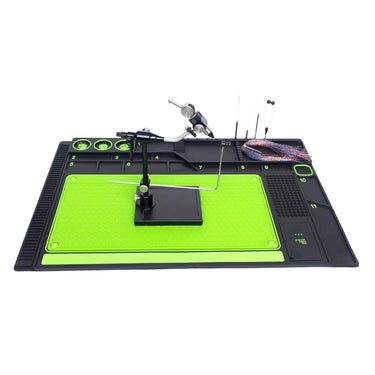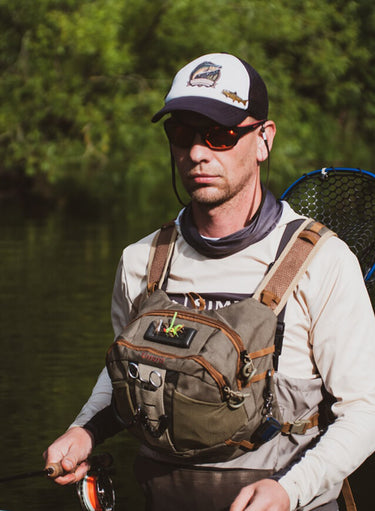Fly Line: Top-Rated Scandi Lines for Salmon and Steelhead Fishing
Finding the right fly line can significantly enhance your salmon fishing experience. In my experience, top-rated Scandi fly lines excel in allowing for precise casting and effective presentation, especially in varying water conditions. Whether you're targeting salmon in larger rivers or steelhead in smaller streams, the right line makes all the difference.

I often recommend specific Scandi fly lines based on the environment. For small rivers, lighter options deliver accuracy without spooking fish, while robust lines can handle the demands of bigger waters. I will also provide recommendations on where to buy these high-quality lines at competitive prices.
Exploring the best options for steelhead fishing has led me to some standout choices that balance performance and versatility. Knowing how to select the right Scandi line can elevate your fishing game and increase your chances of a successful catch.
Understanding Scandi Fly Lines
Scandi fly lines are designed to enhance the angling experience, particularly for salmon and steelhead fishing. Their unique characteristics set them apart from other types of lines, making them a valuable tool for precision presentations in varied water conditions.
Characteristics of Scandi Lines
Scandi lines feature a long front taper which aids in delicate presentations. This design makes it easier to cast lighter flies and land them softly on the water’s surface, reducing disturbance.
The grain weight of a Scandi line is typically lighter than that of Skagit lines, allowing for smoother casting and better line control. Scandi lines are often recommended for medium to small rivers where finesse and accuracy are essential.
Moreover, these lines are highly versatile, adaptable for various water conditions and can be used effectively in spey casting techniques. Their unique taper allows for quick loading on the rod, making it easier to achieve distance without sacrificing control.
Comparing Scandi, Skagit, and Traditional Spey Lines
When comparing Scandi lines to Skagit and traditional Spey lines, I find distinct differences in their applications and construction.
Skagit lines are generally shorter and heavier, suitable for chucking larger flies and sinking tips, particularly in fast-flowing waters. The shorter taper allows for quick, powerful casts, making them ideal for heavily weighted setups.
In contrast, traditional Spey lines have a more uniform taper and may not have the same finesse features as Scandi lines. These lines are often more suited for longer distance casting with larger flies, emphasizing a different fishing approach.
Understanding these differences helps me choose the right line based on the fishing conditions and targeted species. Scandi lines excel in accuracy and presentation, while Skagit and traditional lines each have their unique advantages in specific scenarios.
Selecting Scandi Lines for Different Fishing Environments
When selecting Scandi lines, I focus on the specific fishing environments to enhance my experience and improve my catch rates. The right line can significantly impact both presentation and control. Here’s a breakdown of what to consider for various scenarios.
Top Scandi Lines for Salmon Fishing
For salmon fishing, I prefer floating lines or sink tips depending on the water conditions. Floating Scandi lines are ideal for calm waters, allowing for a gentle presentation.
Key characteristics include:
- Weight: Lines rated for the rod's weight to ensure proper casting.
- Length: Typically 30 to 40 feet for better control.
- Material: Look for lines with low memory to reduce tangling.
I often choose lines specifically designed for Atlantic salmon, featuring tapered heads for precision.
Ideal Scandi Lines for Small Rivers
In small rivers, I find that shorter and lighter Scandi lines perform best. These lines allow for more accurate casting in tight spaces.
Essential factors include:
- Weight Forward Design: This helps load the rod quickly, making casts easier.
- Floating Tip: This provides a delicate presentation for wary fish.
- Line Size: I usually opt for a 5 to 7-weight line, which offers versatility for various fish sizes.
A lower profile helps navigate through brush and trees, improving access to otherwise challenging spots.
Choosing Scandi Lines for Steelhead
For steelhead fishing, especially in freshwater, my choice often varies. I use floating lines in low water conditions but switch to sink tips when the water is higher or faster.
Considerations include:
- Tip Length: Sink tips from 10 to 15 feet are effective for getting down quickly.
- Line Density: A combination of floating and sinking sections allows for versatility.
- Fly Compatibility: I make sure my line works well with steelhead flies, enhancing my presentation.
I prioritize lines that can handle fast current while still delivering a gentle presentation, which is crucial for enticing bites.
Techniques and Tackle for Scandi Fly Fishing
Scandi fly fishing requires precision and specific tackle to enhance the experience. Mastering casting techniques and understanding rod and line pairings can significantly impact success on the water.
Spey Casting Techniques with Scandi Lines
I find that effective spey casting with Scandi lines revolves around smooth, controlled movements. Techniques like Touch and Go emphasize a quick loading of the rod while keeping the line close to the water. This method allows for minimal disturbance, improving presentation.
My preference is for a two-handed spey rod, which typically ranges from 10.5 to 14 feet, depending on the river size. I also consider the grain weight of the line; for Scandi lines, choose a weight that matches your rod's specifications. This ensures proper loading and casting efficiency. Using weighted flies can assist in maintaining depth when combined with these casting techniques, making it easier to reach fish-holding spots.
Optimizing Rod and Line Weight Pairings
Choosing the right rod and line weight is critical to success. My setup often involves pairing a rod that matches the grain weight of the Scandi line, usually ranging from 300 to 600 grains, depending on the water conditions.
For small rivers, I often opt for switch rods or lighter spey rods that provide versatility in casting. The rod weight should correspond to the line size to prevent overloading or underloading during casts. A braided multifilament core not only enhances casting distance but also improves the line’s sensitivity to strikes.
When selecting my tackle, I ensure that both the rod and line are compatible. This combination allows for better energy transfer throughout the cast, resulting in more accurate presentations.



